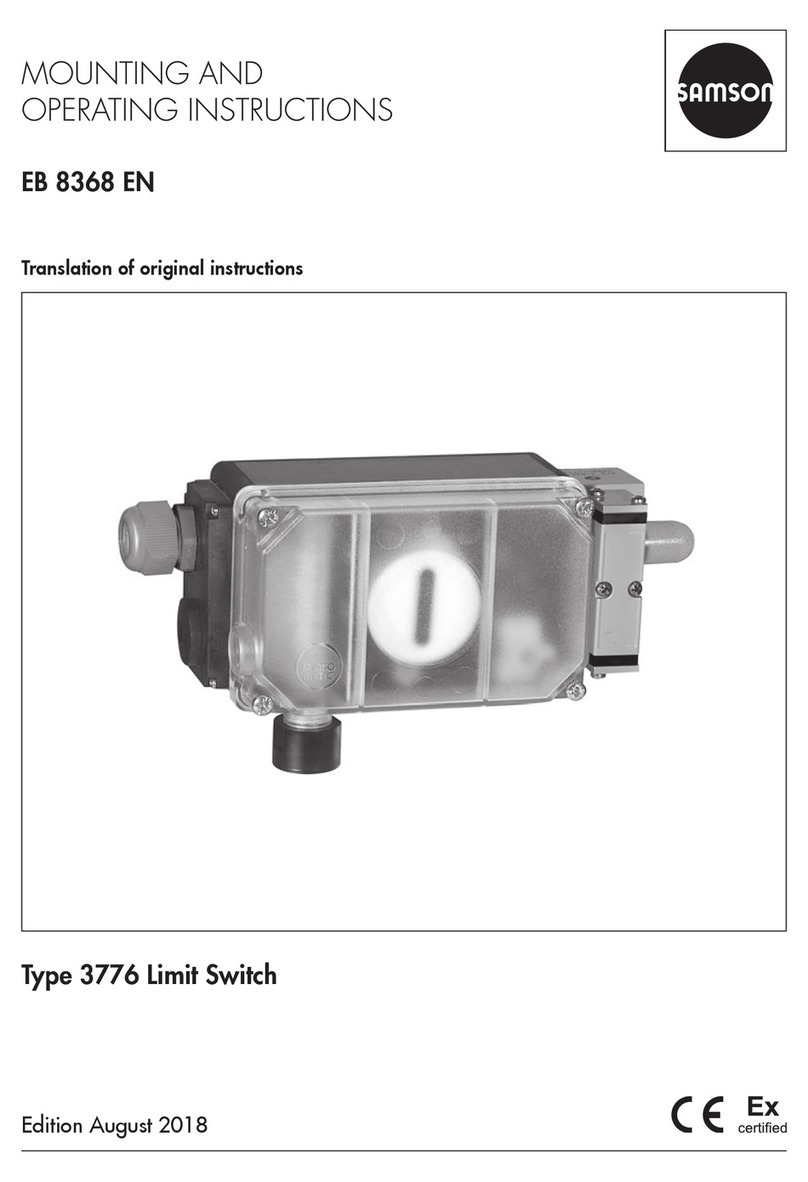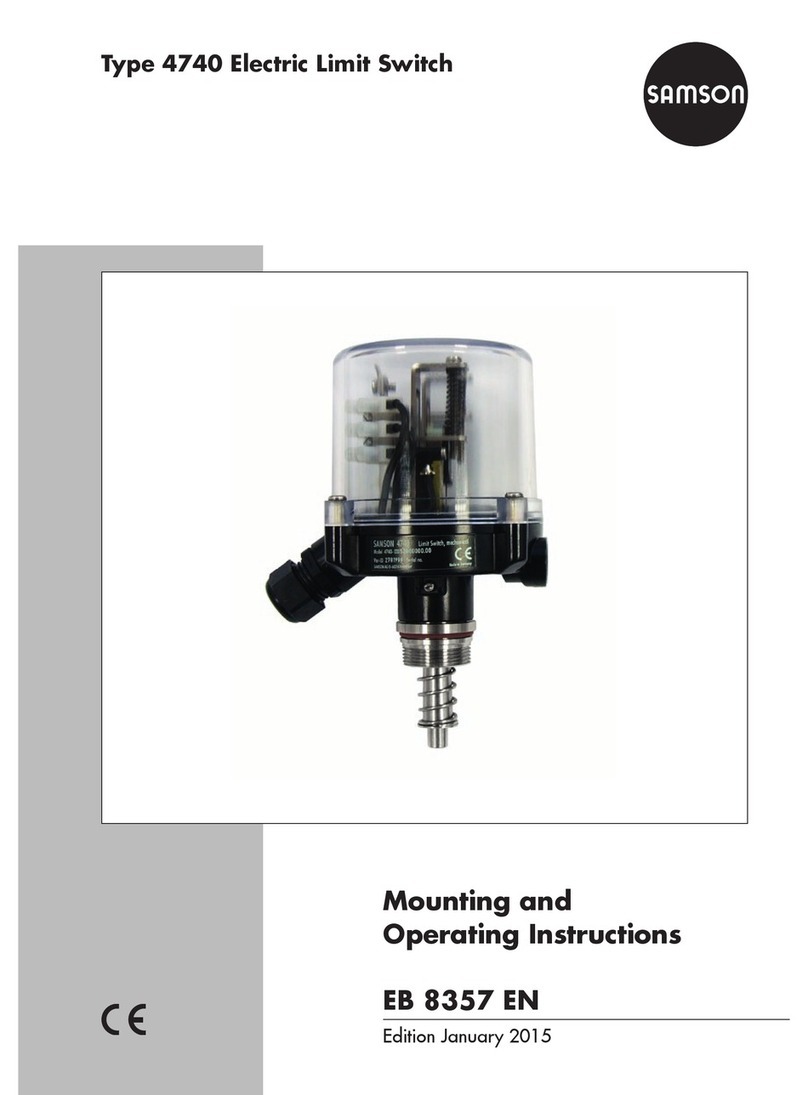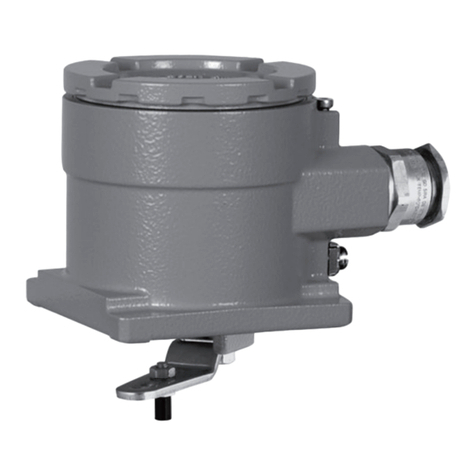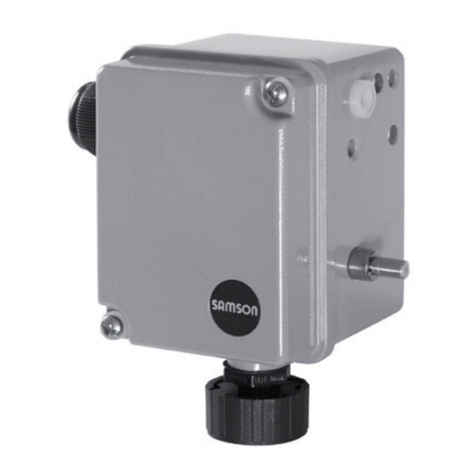10 EB 8356 EN
Attachment to the valve
3 Attachment to the valve
The limit switch can be mounted either di-
rectly to SAMSON Type3277 Actuator or to
valves with cast yokes or rod-type yokes ac-
cording to IEC60534-6 (NAMUR).
Combined with an intermediate piece, the
limit switch can also be mounted on rotary
actuators.
The standard limit switch is delivered without
accessories. Any additionally required ac-
cessories are listed together with their order
numbers in the tables on page20 on-
wards.
The limit switch may be mounted on the
right-hand or left-hand side of the valve.
Any subsequent changes to the mounting
position cause the switching function of the
limit switch to change as well. See section5.
3.1 Direct attachment
1. Fasten the clamp (1.2) to the actuator
stem, making sure that the fastening
screw rests in the groove of the actuator
stem.
2. Fasten the associated lever D1 or D2 to
the lever of the limit switch.
3. Secure the intermediate plate (15) with
the gasket facing towards the yoke.
4. Position and fasten the limit switch onto
the intermediate plate, making sure that
the lever D1 or D2 slides in line over the
pin(1.1) of the clamp (1.2).
5. Mount cover (18).
6. Mount the vent plug suitable for the cor-
responding degree of protection on the
cover (18).
3.1.1 Attachment of version
with solenoid valve
To establish the signal pressure connection to
the actuator, use a connection block or swi-
tchover plate listed in the tables in
page20 onwards. An M3 screw plug is
located on the back of this device version.
Actuators with 240 to 700cm² effective
areas
1. Make sure that the tip of the gasket(16)
projecting from the side of the connec-
tion block (Fig. 2, middle) is positioned
to match the actuator symbol for the ac-
tuator's fail-safe action "actuator stem
extends" or "actuator stem retracts".
If this is not the case, unscrew the three
fastening screws and lift off the cover.
Turn the gasket (16) by 180° and re-in-
sert it.
The old connection block version requires
the switch plate (13) to be turned to align
the actuator symbol with the arrow mark-
ing.
2. Place the connection block with the asso-
ciated gaskets against the limit switch
and the yoke. Fasten it using the screw.
For actuators with fail-safe action "actua-
tor stem retracts", additionally mount the
external signal pressure pipe.





































